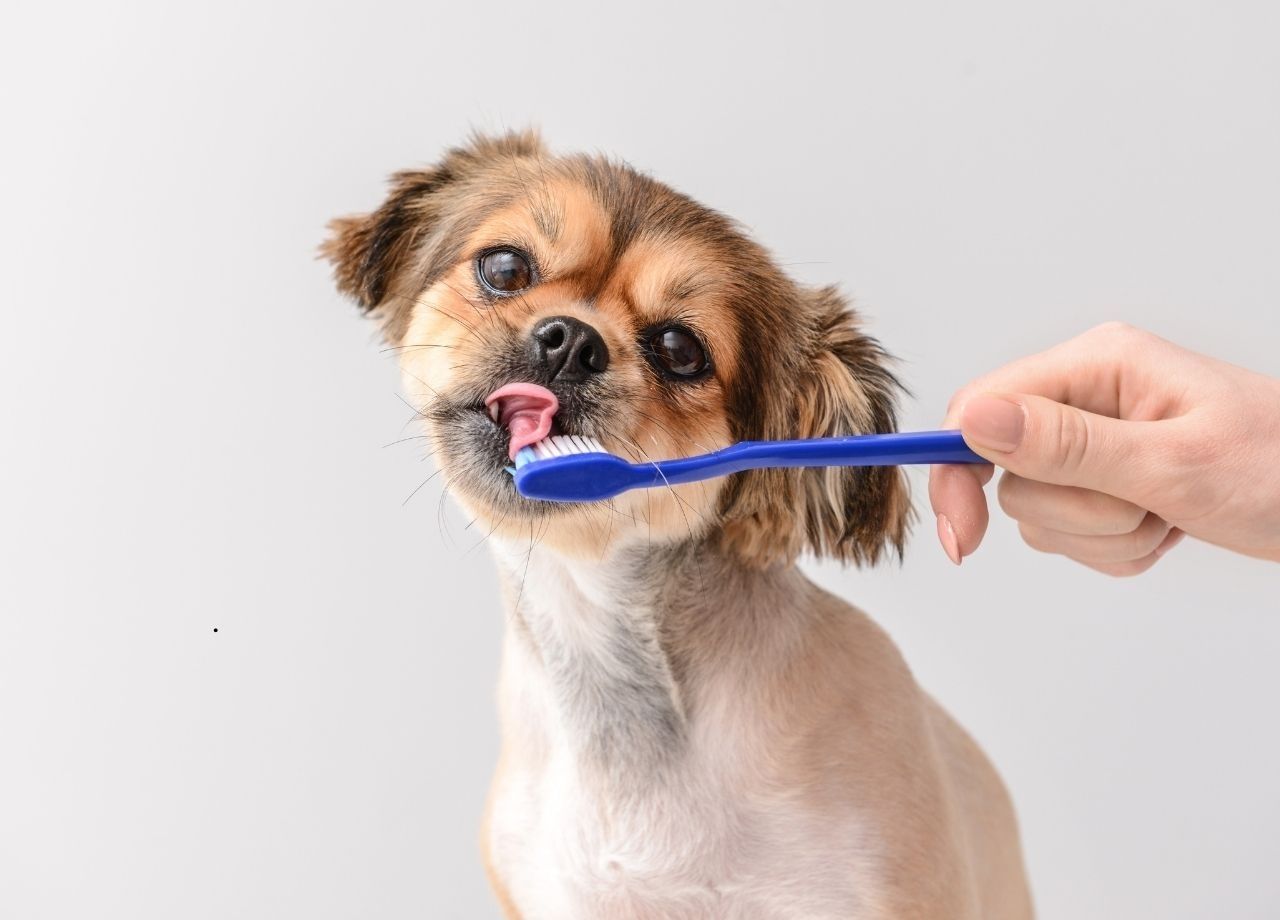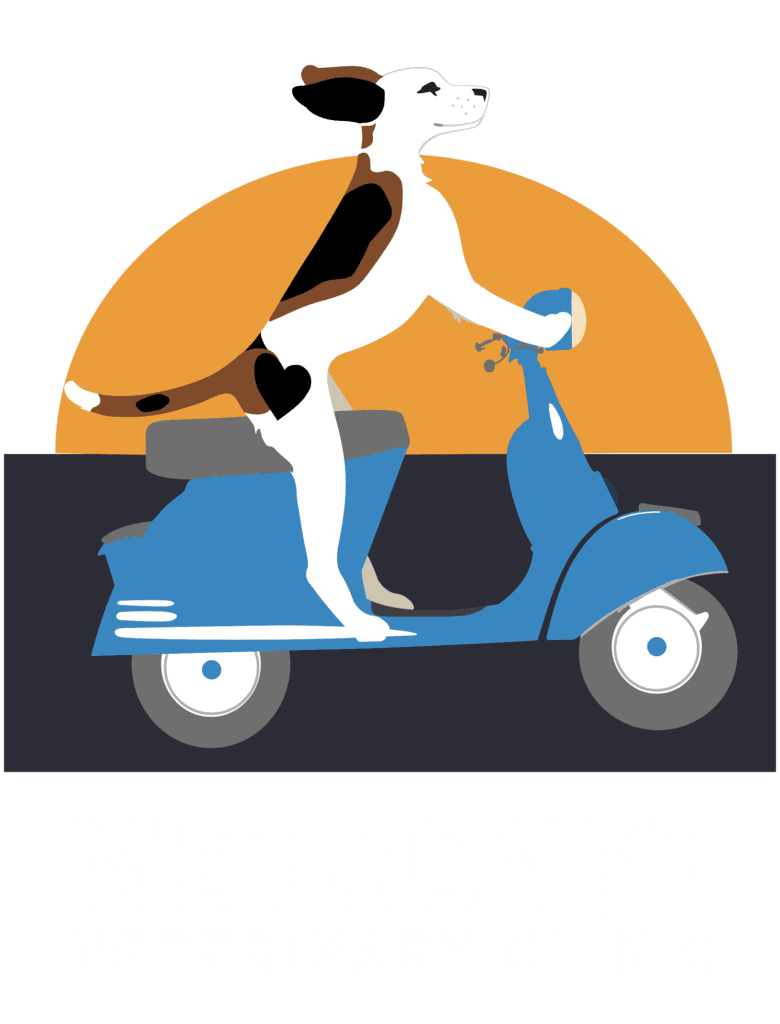Noticing a yellow tint creeping across your dog’s teeth can be unsettling, especially if you’ve been diligent about their care. Tooth discoloration in dogs is a common concern—and one that’s often overlooked until it leads to more serious issues like bad breath, gum disease, or even tooth loss.
At Metrovet Veterinary Clinic in Boston, we see yellowing teeth almost every day. While it can be a cosmetic issue, it often signals deeper dental or systemic problems that need to be addressed early. Understanding why this is happening and what you can do about it can make all the difference in your pet’s long-term health.
This post explores the real reasons behind tooth discoloration in dogs, what it means for their overall wellbeing, and what you can do at home and with your veterinarian to reverse the damage.
This article is for informational purposes and should not replace professional veterinary consultation. If you suspect a dental problem, schedule an appointment with your vet.

What Causes Yellow Teeth in Dogs?
Tooth discoloration in dogs doesn’t happen overnight. It develops gradually, often starting with a slight yellow film that progresses into darker stains or even visible tartar buildup. While it may seem purely cosmetic, yellowing teeth are often an early sign of dental disease.
The most common cause of yellow teeth is plaque and tartar buildup. Plaque is a sticky film of bacteria that forms on the surface of teeth shortly after eating. If not removed regularly, it hardens into tartar, which is yellow or brown and can only be removed professionally. Tartar irritates the gums, leading to inflammation (gingivitis), gum recession, and eventually periodontal disease.
Diet plays a big role too. Dogs fed only soft food or treats without abrasive chewing activity are more prone to dental issues. Lack of chewing means there’s no natural way to reduce plaque. Certain diets, especially those high in carbohydrates, can also encourage bacterial growth in the mouth.
In some cases, yellowing could be due to enamel hypoplasia—a condition where the enamel doesn’t develop properly, often because of illness, malnutrition, or trauma during tooth formation. It makes the teeth appear yellowish or brownish and more prone to wear and tear.
Aging is another contributing factor. As dogs get older, the enamel naturally wears down, and the inner dentin layer becomes more exposed. Dentin is naturally yellow, so this can give the appearance of overall discoloration even if plaque isn’t significant.
Finally, staining from external sources such as licking metal objects, certain medications, or chronic exposure to iron-rich water can also result in discolored teeth.
What Yellow Teeth Might Be Telling You About Your Dog’s Health
Beyond appearance, yellow teeth are often a symptom of an underlying problem—usually periodontal disease. It’s estimated that by age three, more than 80% of dogs show signs of dental disease. Yellow teeth are often the first visible sign.
When bacteria build up along the gumline, it doesn’t just stay in the mouth. Oral bacteria can enter the bloodstream and affect internal organs like the heart, liver, and kidneys. This is known as bacteremia, and it poses serious health risks, especially in senior dogs.
Bad breath, bleeding gums, drooling, and discomfort while eating are other red flags that often accompany yellowing teeth. If your dog has stopped chewing on toys or avoids hard food, it could be because of oral pain caused by plaque and tartar buildup.
Some breeds are more prone to dental issues than others. Small breed dogs like Chihuahuas, Yorkies, and Dachshunds tend to develop dental disease earlier and more aggressively. Their teeth are often crowded in small jaws, which creates more spaces for plaque to hide.
How to Treat and Reverse Yellowing in Your Dog’s Teeth
If you’ve noticed yellowing on your dog’s teeth, the first step is to book a dental exam with your veterinarian. In most cases, professional dental cleaning under anesthesia is required to remove tartar from both the visible surface and under the gumline. This is not something that can be achieved with over-the-counter solutions or home brushing alone.
At Metrovet, we perform comprehensive dental cleanings that include ultrasonic scaling, polishing, and detailed oral exams. We also check for underlying issues like loose teeth, oral tumors, or abscesses that aren’t visible during routine checks.
Once a professional cleaning has been done, maintaining dental health becomes much easier and more effective. Daily brushing with dog-safe toothpaste is the gold standard. If brushing isn’t possible every day, aim for several times a week at a minimum.
Dental chews and specially formulated diets can help reduce plaque buildup. Look for products approved by the Veterinary Oral Health Council (VOHC), as these have been tested for effectiveness.
Water additives can also help control bacteria, though they’re best used as a supplement—not a replacement—for brushing or dental chews.

For dogs who absolutely will not allow brushing, schedule more frequent professional cleanings and discuss alternatives like oral gels or prescription dental diets with your vet.
When Tooth Color Change Is a Sign of Something Else
Sometimes, yellowing is not related to tartar at all. If only one or two teeth are discolored—especially if they’re more brown, gray, or even pink—this could indicate tooth trauma or death of the tooth pulp. That type of internal discoloration usually signals the tooth is no longer alive and may require extraction or root canal therapy.
In rare cases, yellow or brown teeth can be a symptom of systemic illness or metabolic disorders, especially if accompanied by other signs like weight loss, vomiting, or lethargy. Dogs with chronic kidney disease, for example, may develop oral ulcers and dental changes. A thorough physical exam and lab work would be necessary to determine the underlying cause.
Puppies may also have naturally yellowish baby teeth, which are eventually replaced by adult teeth. However, if your pup’s adult teeth come in yellow or appear abnormal, this may suggest developmental issues with enamel or mineral deficiencies during growth.
How to Prevent Yellow Teeth in Dogs
Prevention begins with routine. Brushing your dog’s teeth is the single most effective way to prevent plaque and tartar. Start when they’re young so they grow comfortable with the process. Use only vet-approved toothpaste, as human toothpaste can be toxic.
Feed a balanced diet with enough chewing opportunities. Raw meaty bones (under supervision), rubber chew toys, or dental sticks can help keep plaque at bay.
Routine dental exams are just as important as vaccinations. Most adult dogs benefit from an annual dental check-up, and many need cleanings every 6–12 months depending on breed, age, and home care.
Finally, pay attention to subtle changes. A slight color shift may not seem urgent, but it’s often the first sign that your dog’s mouth needs help. Acting early can prevent more painful—and expensive—problems down the road.
Final Thoughts
Tooth discoloration in dogs is more than just an aesthetic issue. It reflects what’s happening beneath the surface—both in the mouth and sometimes in the body. Yellow teeth are most commonly caused by plaque and tartar buildup, but they can also indicate trauma, systemic disease, or developmental problems.
Fortunately, with proper care and regular veterinary support, you can protect your dog’s smile and their overall health. If your dog’s teeth are yellowing or showing signs of dental disease, don’t wait for it to get worse. Schedule an exam, discuss treatment options, and start a dental care routine that works for both of you.
Their mouth is a gateway to their wellbeing—keep it clean, and the rest of the body will thank you.

